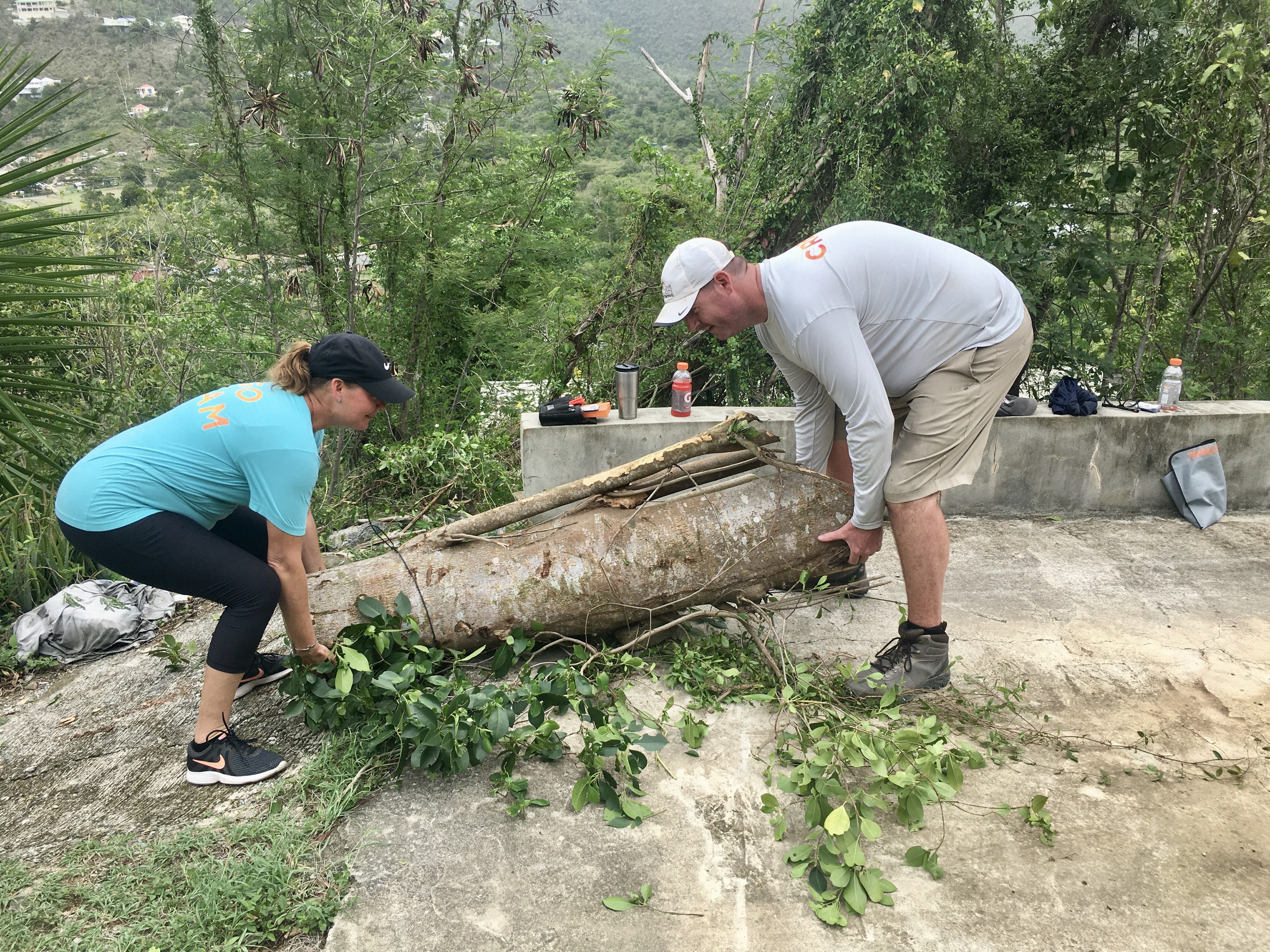Recap : Tropical Storm Isaias

Each year as the month of July wanes, residents of the Virgin Islands begin to monitor the weather in the tropics more closely. The traditional peak of hurricane season won’t arrive until mid-September, but “early” storms are becoming more and more common as global weather patterns change.
On July 25th, the team at Love City Strong (LCS) began monitoring Invest 92L. Invests, also referred to as “areas of interest”, are numbered 90 through 99 and followed by the suffix letter “L” in the Atlantic Basin. The numbers are rotated throughout the season as often as needed. Invests are monitored for development by the NHC, and as they organize they escalate to a tropical depression, a tropical storm, a hurricane, or occasionally a potential tropical cyclone (PTC), in the case of an invest that is approaching land and requires forecasting but has not yet organized. Invest 92L was escalated to PTC 9 on July 28th, and the National Hurricane Center (NHC) began official forecasting for the system.
The large system moved quickly but did not manage to coalesce into Tropical Storm Isaias until the evening of July 29th, when it was passing the Territory to the south of St Croix. One of the paradoxes of hurricane season is that we’re almost always hoping a passing system will be a manageable but significant rain event, even as we pray to be spared a damaging impact. Tropical Storm Isaias did not deliver on this front, at least for St. John, as the center of circulation passed further to the south of the Territory than expected, limiting the amount of rain we received. The majority of the severe weather moved through St. John in the early hours of the 30th, and curfew was lifted Territory wide at 6 am.
Each storm that passes through the Territory serves as something of a fire drill. Our team uses these incidents as an opportunity to test our deployment plans, to adjust our response, and to identify weaknesses in existing operations and communications plans. In the case of Isaias, we executed routine briefings, morning and afternoon, throughout the week leading up to the system’s projected impact on our community, and in the days after. The Go Team began pre-impact wellness checks 48 hours before the weather was expected, and all LCS managed sites and assets were secured. The team stayed in close contact with the Virgin Islands Territorial Emergency Management Agency (VITEMA), the Federal Emergency Management Agency (FEMA), our Virgin Islands Voluntary Organizations Active in Disaster (VI VOAD) partners, and partnering organizations on St John throughout the incident.
After a storm passes, we gather the team to discuss the successes and failures of our response. Identifying the ways in which our plans failed, or underperformed is a critical part of developing our future programs, training, and community outreach. Each storm offers unique opportunities to test our various protocols and plans, and this year promises to offer more lessons than ever, as we layer a global pandemic atop the annual tropical weather threats.
When we recognize weaknesses, unmet needs, or challenges to our organizational routine the team collaborates to come up with next steps, potential solutions, and partners who may have valuable knowledge to contribute. Each storm is unique, and whether large or small, they each pose their own challenges.
Tropical Storm Isaias helped us streamline our incident log system and develop a more thorough follow up process on community requests. It crystalised the need for our LCS team to be proactive about our own preparedness, since we are often in the field in the days leading up to a storm, and may not have time to handle last minute preparations. It also provided us with an opportunity to clarify lines of communication and reporting structure within a disaster, as those sometimes differ from our day to day, “blue skies” structure.
Overall, the response to Tropical Storm Isaias was a valuable learning opportunity for the LCS team, and provided several critical takeaways. We identified points of friction in our systems, and developed actionable steps in place to remedy those. As we continue to experience impacts of varying size and complexity, our response will become increasingly scalable and effective.
